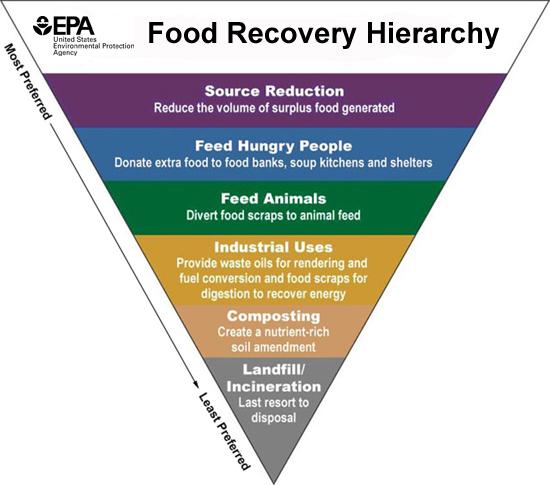Save time and reduce food waste
Tips to Reduce Food Waste
The average American throws out almost 1 pound of food per day. It may be difficult to notice, but it adds up over time. At the end of a year, a family of four would have wasted $2,100 on uneaten food.
Fortunately, there are simple ways to reduce waste and get that money back in your pocket.
Here are our top 21 tips to reduce household food waste
1. Meal Plan
Decide which recipes you’ll cook this week before heading to the store.
2. Shop From a List
Once you've selected your recipes, compile a list of ingredients you need. Buying only what you know you need is the most impactful way to save money and ensure you'll use it all up.
3. Check Your Pantry First
This is a passionate subject for professional chefs. It's easy to forget what you already have, but a quick check answers all your questions! Compare your grocery list with what's in your kitchen before you shop.
4. Eat Leftovers
Leftovers have two perks: saved time and saved money. Pack leftover food for lunch or designate a weekly “Leftovers Night” to clean out the fridge. Leftover sauces and ingredients can be repurposed into other delicious meals!
5. Eat Your Ends + Stems
Many vegetables have parts that might not be fully utilized in traditional recipe writing. Broccoli stalks, for example, are trimmed away though they’re arguably the more delicious part. Eat your stems, tops, leaves, peels, etc.
6. Eat Ugly
Give some of that bruised or lumpy produce some love. Cosmetic issues have no impact on flavor or nutrition! When your produce at home starts wilting or browning, slice off the affected part and either cook or freeze the rest.
7. Freezer is Your Friend
The freezer is not just for ice cream (though there's plenty of that too). Romaine, strawberries, and avocados, for example, can be frozen and blended into smoothies. Cooked grains and rice, sauces, and meat can be saved there too. Remember to label and date everything!
8. Save Scraps for Stock
We're not exaggerating when we say almost everything can be turned into stock. Chicken bones, vegetable peels and insides, onion skins - even apple cores turn “garbage” into culinary gold.
9. Proper Storage
E+S has a large ingredient directory to show you how to keep things fresh longer. Some fruits release ethanol which makes others ripen. Some benefit from high humidity in the fridge, while others need a dark spot to last longest. When groceries are stored properly, you’ll have more time to use them up.
10. First In, First Out
Another professional chef rule of thumb, First In, First Out (FIFO). Bring older items to the front of your fridge and pantry so they’ll be grabbed first. This also keeps you from forgetting what's there.
11. Understand Expiration Dates
They aren’t real! With the exception of infant formula, there are zero (zip, zlich, nada!) regulations or standards currently applied to Best By, Use By, Eat By, or Sell By dates. Do the sniff test and trust your senses to tell if something has turned. Most dairy is good for days after the date, eggs can stay fresh for months!
12. Eat With Your Stomach, Not Your Eyes
American dinner plates have increased in size by 36% since the 1960s. In Europe, the average restaurant plate is 9 inches compared to 12 inches in the U.S. Start by taking smaller portions, and go for seconds if necessary. At restaurants, order only what you need and take home any leftovers.
13. Eat Less Meat
A plant-forward diet is the future of environmental eating. Animals require more resources to grow, produce, and distribute so wasting any amount of beef or pork has a much larger negative impact than wasting an apple. If you’re buying less meat, you’re more likely to savor it and waste it less.
14. Use Recipes as Guidelines and Get Creative
Missing an ingredient for a recipe? Make a substitution! It's totally ok to swap herbs, cheeses, grains, even vegetables and proteins, and still get a delicious dish. Most savory cooking is adaptable, and as you practice you can cook from your fridge more instead of running out to the store.
15. Experiment with Old-School Preservation
Canning, fermenting, pickling are all ways to extend the life of a product or rescue it from going bad. Check out Zero Waste Chef for great tips and recipes on this.
16. Declutter
Does a messy fridge bring you joy? Probably not. Keep your food storage and refrigerator areas organized and pared down. That way you can see exactly what you have, and nothing gets lost and moldy at the back of your fridge.
17. Measure
Run a food waste audit in your home to find out exactly what your household wastes most often. Lucky for you, Ends+Stems has a full Food Waste Audit Guide for you!
18. Spread the Word
Share the importance of reducing food waste with family, friends, and even strangers! If you're a parent, teaching our kids to respect where food came from, and the resources needed to grow, pack, ship and cook food, teaches them to be mindful of waste as they grow older.
19. Donate or Share Extras
Try apps like Olio or donate to your local food banks or shelter year-round. We also love hosting leftovers swaps or cooking swaps with friends and neighbors (you make a double batch of lentil soup, they make double roast chicken, then swap!).
20. Compost What You Can't Cook
Composting keeps food from decomposing in a landfill and releasing methane, a greenhouse gas 28x more powerful than carbon dioxide. While composting is better, edible food that gets composted is still wasting the water, gas, labor, land, and time that was spent producing and distributing that food. Food is best eaten!
21. Forget Perfection
This is not a zero sum game. If you have a bad (food waste) day or you just can’t engage your willpower to follow through on leftovers today. It. Is. Ok. Start again tomorrow. 100% of Ends+Stems users surveyed said that by being in our community, they thought about food waste at other times in their week. Awareness and effort are the most important first steps to change. We’re here for you.
For more information, see the EPA's website for sustainable management of food.



